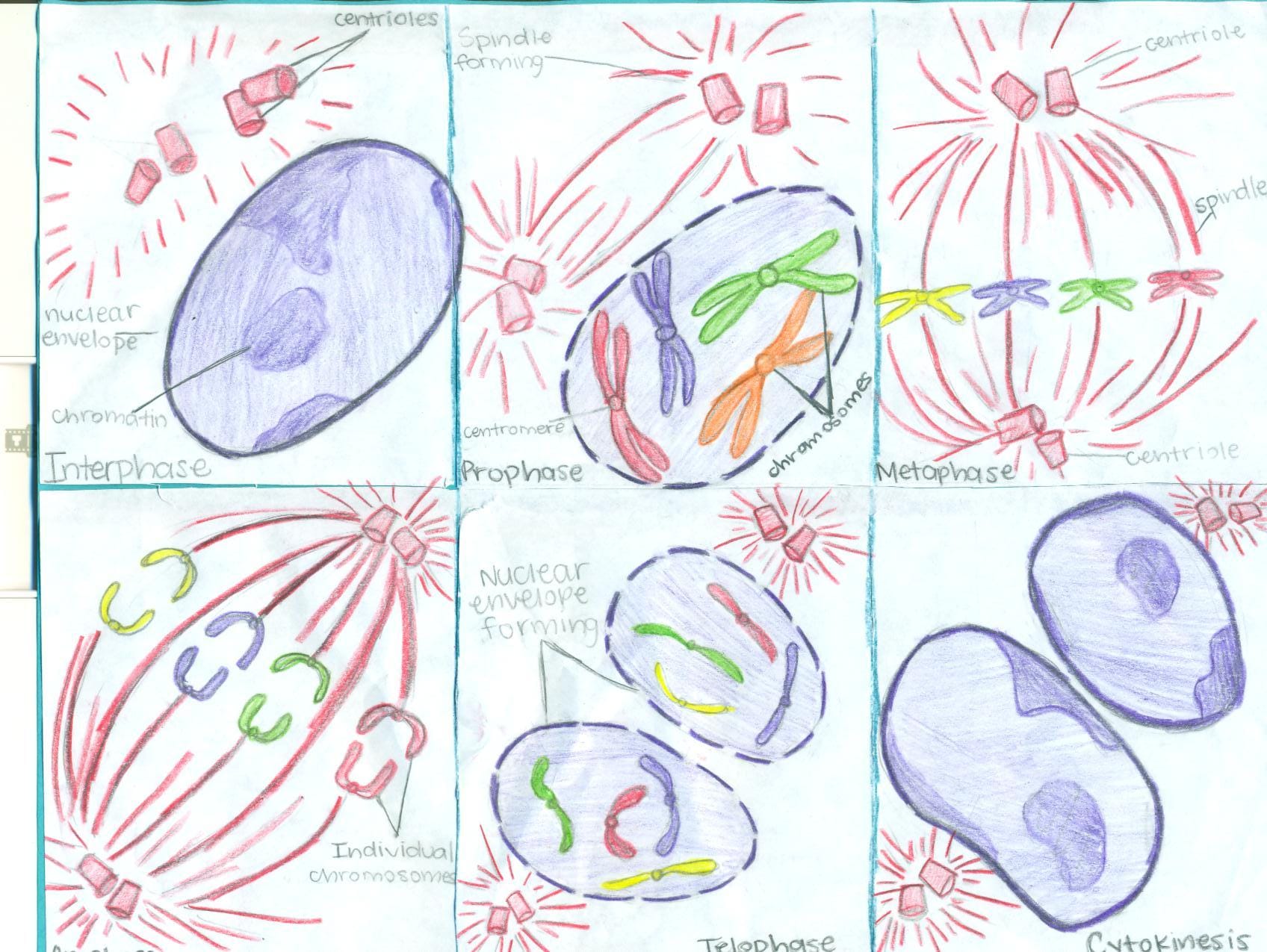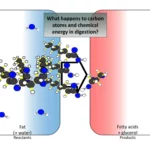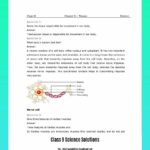Hey there, science explorers! Ever wonder how a single cell multiplies to form everything from a towering tree to a teeny-tiny tadpole? The secret lies in a process called mitosis – the incredible cellular copy machine! And guess what? We’re going to unlock its secrets by creating a dynamic, hands-on mitosis flip book! It’s gonna be like watching a microscopic movie of cells dividing right in your hands. In this guide, I’ll take you through each stage of mitosis step by step, just like on Science Friday! So, grab your art supplies and get ready for some cellular cinema!
Building Your Mitosis Flip Book: Lights, Camera, Action!
Making a mitosis flip book is easier than you might think. It’s like creating a stop-motion animation of a cell dividing. Let’s gather our supplies and get started!
Step 1: Gather Your Filmmaking Gear
Just like any good movie production, we need the right tools. Don’t worry, you won’t need anything fancy:
- Sturdy Paper: Regular printer paper will do, but thicker cardstock or index cards will make a longer-lasting flip book.
- Drawing Tools: Unleash your inner artist with pencils, colored pencils, crayons, markers – whatever you prefer for your cellular close-ups.
- Stapler: This is our key grip – holding everything together.
- Scissors (Optional): Helpful for getting those clean, crisp edges on your frames.
Step 2: Illustrate the Cellular Stars: The Phases of Mitosis
Now for the main event: drawing the different phases of mitosis. Think of these as your movie’s keyframes, each capturing a pivotal moment in the cell’s division. We’ll focus on four main phases:
- Prophase: The chromosomes–those DNA bundles–condense and become visible. Imagine them getting ready for their big debut! The nuclear envelope, the membrane around the nucleus, starts to break down, and spindle fibers, like tiny ropes, begin to form.
- Metaphase: The chromosomes line up in the middle of the cell, along the “metaphase plate,” as if awaiting their cue. The spindle fibers attach to each chromosome’s centromere, the point where the two identical sister chromatids are joined.
- Anaphase: Action! The spindle fibers pull the sister chromatids apart, dragging them towards opposite ends of the cell. It’s like they’re being pulled apart by microscopic tug-of-war ropes!
- Telophase: Our grand finale! Two new nuclei form around the separated chromosomes. The cell begins to divide, creating two identical daughter cells. The spindle fibers disappear, and the chromosomes begin to unwind.
Don’t stress about perfect scientific accuracy – focus on capturing the general movements and changes. You can even add details like spindle fibers or organelles if you want to get fancy! You can find some great printable templates online at places like The Science Spot and Grosse Pointe Public Schools, which can help with accuracy. You can even check out an example on FlipHTML5 to get some more ideas. Remember, every drawing is a step closer to understanding the magic of mitosis! Check out some videos of completed flip books on YouTube for inspiration!
Step 3: Assemble Your Cellular Cinema
Time to assemble our film! Stack your drawings in order – Prophase, Metaphase, Anaphase, Telophase. Align the edges neatly and staple them together along one side, creating the spine of your flip book.
Step 4: Enhance Your Mitosis Movie
Now for the director’s cut! Add labels to each phase, short descriptions, or even color-code your creations. Maybe draw some organelles like the nucleus or cell membrane. Get creative and make it your own! You could even add extra pages to show what happens before and after mitosis (interphase and cytokinesis). The Lindsley Science PDF guide has a great example of how to use color and even a rubric you can follow.
Why a Flip Book? It’s Not Just Flipping Fun!
Why is a flip book better than just reading a textbook? Here’s the deal:
- Visual Learning: Seeing mitosis in motion is way cooler than static pictures. It’s like watching a movie instead of reading the script. If you’re a visual learner, this is your jam.
- Hands-on Learning: Creating the flip book helps the concepts stick in your brain. You’re not just passively learning–you’re involved! This is what we call kinesthetic learning, and it’s super effective.
- Great for Assessment: Flip books are a great way for teachers to see if you’ve got a handle on mitosis. They can use a rubric to check your accuracy and creativity.
Taking Your Flip Book Further: Become a Mitosis Maestro
Ready to level up your flip book game?
- Explore Different Styles: Check out online templates and examples for inspiration. The Exploratorium has a really neat activity where you use images from time-lapse movies – how cool is that?!
- Add Some Flair: Pop-ups? Pull-tabs? Maybe even a digital version with animation? The possibilities are endless!
- Compare Mitosis and Meiosis: Meiosis is another type of cell division used in sexual reproduction. A flip book comparing the two could be pretty epic.
- Real-World Connections: Mitosis is responsible for growth, healing, and everything in between. Show how it works in real life in your flip book!
Mitosis in the Real World: More Than Just Cell Division
Mitosis isn’t just a cool process to learn about; it’s essential for life as we know it. Think about it:
- Growth and Development: From a single fertilized egg to a complex organism, mitosis is the driving force behind growth. It’s how we get from a tiny seed to a giant sunflower, from a tadpole to a frog.
- Repair and Regeneration: Scrape your knee? Mitosis helps create new skin cells to heal the wound. Mitosis is constantly at work repairing and replacing damaged or worn-out cells throughout our bodies.
- Reproduction: Many organisms rely on mitosis for asexual reproduction, where a single parent produces genetically identical offspring. Think of plants that reproduce through cuttings or single-celled organisms like bacteria.
But what about when mitosis goes wrong? Some experts believe that cancer, for example, is largely a result of uncontrolled mitosis. When cells lose their ability to regulate division, they can multiply rapidly and form tumors. This is a simplified explanation, and cancer research is incredibly complex and ongoing, but it highlights the critical role of proper mitotic regulation.
The Future of Mitosis Research: What’s Next?
While we’ve learned a lot about mitosis, researchers are constantly making new discoveries. For instance, scientists are exploring:
- The role of specific proteins in regulating mitosis: How do these tiny machines ensure that everything happens in the right order and at the right time?
- The connection between errors in mitosis and diseases like cancer: Understanding what goes wrong in mitosis could lead to breakthroughs in treatments and cures.
- The evolution of mitosis: How did this complex process develop over millions of years?
So, there you have it! With a little creativity and these tips, your mitosis flip book will be a blockbuster hit – a testament to the amazing world of cell division. So, gather your supplies, unleash your inner scientist, and get flipping!
In the earth’s crust, vast dimensions of metaconglomerate rest beneath our feet, showcasing intense geological processes. Elsewhere, musicians studying instrumental fingerings can discover the mellophone fingering chart, a valuable resource that simplifies the learning journey.












